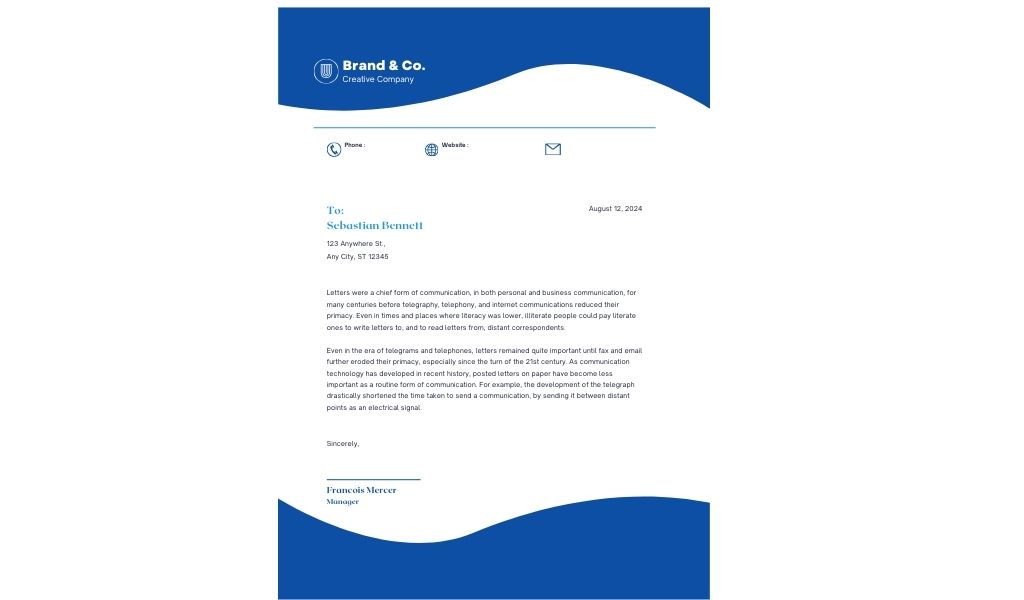You can create a distinctive cover page that mixes style and content, whether sending out an invitation or an important document. Add sender and recipient information, a concise subject line, and a brief message.
This helps anyone handling the fax quickly identify the document’s purpose. It also increases accountability by providing a clear audit trail.
The Header
The header may contain the sender’s name or fax number, depending on the template. It may also have a short message or instructions. Make sure that this information is evident. This is especially important since fax transmission can be blurry, or the recipient may need a better-quality printer.
Think of a printable cover letter for fax as a digital handshake. It sets the tone for your message and makes an excellent first impression on the recipient. Imagine your fax arriving at a busy desk, competing for attention among other documents. A well-crafted cover sheet can distinguish between your message being read immediately or getting lost in the shuffle. Ensure it includes the recipient’s information, date of transmission, and a concise subject line that summarizes the purpose of your fax.
Another critical information that should be mentioned on the fax is the total number of pages. This will help the receiver verify that they have received all the intended pages and save them from any confusion or miscommunication due to a missing page. It’s also a good idea to include any additional comments or special handling requests you want to mention.
The Recipient’s Information
This section of the fax cover letter includes the recipient’s name, address, and phone and fax number. This information helps the recipient identify the sender and the purpose of the fax. It also allows the recipient to review the document and quickly provide additional comments or instructions.
The first line should contain the sender’s name and company details, followed by the date. The next line should include the recipient’s fax number. Lastly, write a brief description of the documents being sent to help the receiver determine the contents at a glance.
If the fax is for a business, the sender’s contact information should be listed at the top of the sheet, along with the business name and logo. After this, the company’s street address, ZIP code, email, phone, and fax numbers should be included. This information should be labeled and incorporated as the first item on the fax cover sheet. Only their details should be included if the fax is for an individual. This ensures that no one can read private information, such as health records or legal documents, by accident.
The Subject Line
A fax cover sheet is an integral part of the faxing process and helps ensure that all documents reach their destination. It also allows the recipient to identify and prioritize the fax.
The fax cover sheet should include the name and fax number of the sender as well as the recipient. It should also have a subject line for the main document being sent. The fax cover sheet should also specify whether the document is urgent or requires a response. It should also state if the document is confidential and to whom it’s being sent.
A fax cover sheet should also contain a description box for all the documents included in the fax. This is a place to write the title of the papers, their number and size, and any other relevant information. A fax cover sheet should also include a field for comments that can be used to clarify any of the details in the fax. This is particularly important if the fax contains multiple pages or has been printed on different paper types.
The Message
There are several different ways to format a fax cover sheet. For example, some people like to write a short paragraph explaining why they are sending the document or add a note with important information. Others prefer a plain fax template with only the necessary fields. This includes the To, From, Fax number, and phone number fields and a comment section for any special instructions or CC information.
This is especially important if you’re sending a fax with confidential documents. Including this information helps to ensure that the correct person will receive your fax and that it will be in the right hands.
If you’re using a template with a fax header, ensure it has the date and number of pages, along with your name, fax number, and address. Most templates will also include a space for a brief message and a logo. This is a great way to make your document look professional and official.
The Signature
When writing a cover sheet for a fax, include your signature. This can be done by typing your full name or writing it out by hand. Be sure to leave a few spaces between your closing phrase and your full name so you have room to sign it after you print it out.
If your fax contains confidential information, you can also add a statement indicating that the contents are for the recipient’s eyes only. This will help to prevent the document from being seen by unauthorized people or companies.
Finally, you should list the details of any documents or attachments that are included in the fax. Doing this lets you ensure the receiver knows exactly what they are getting and what to anticipate. It will also lessen the possibility of misunderstandings. This is especially important if your fax includes multiple pages or attachments or if the original fax needs to be recovered or misplaced during transmission. This is why constantly reviewing your fax before sending it is a good idea.

















